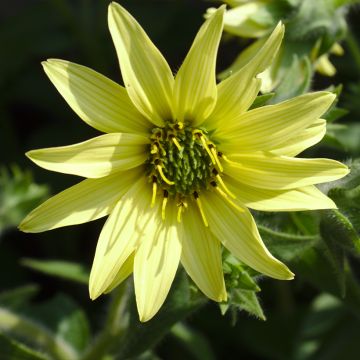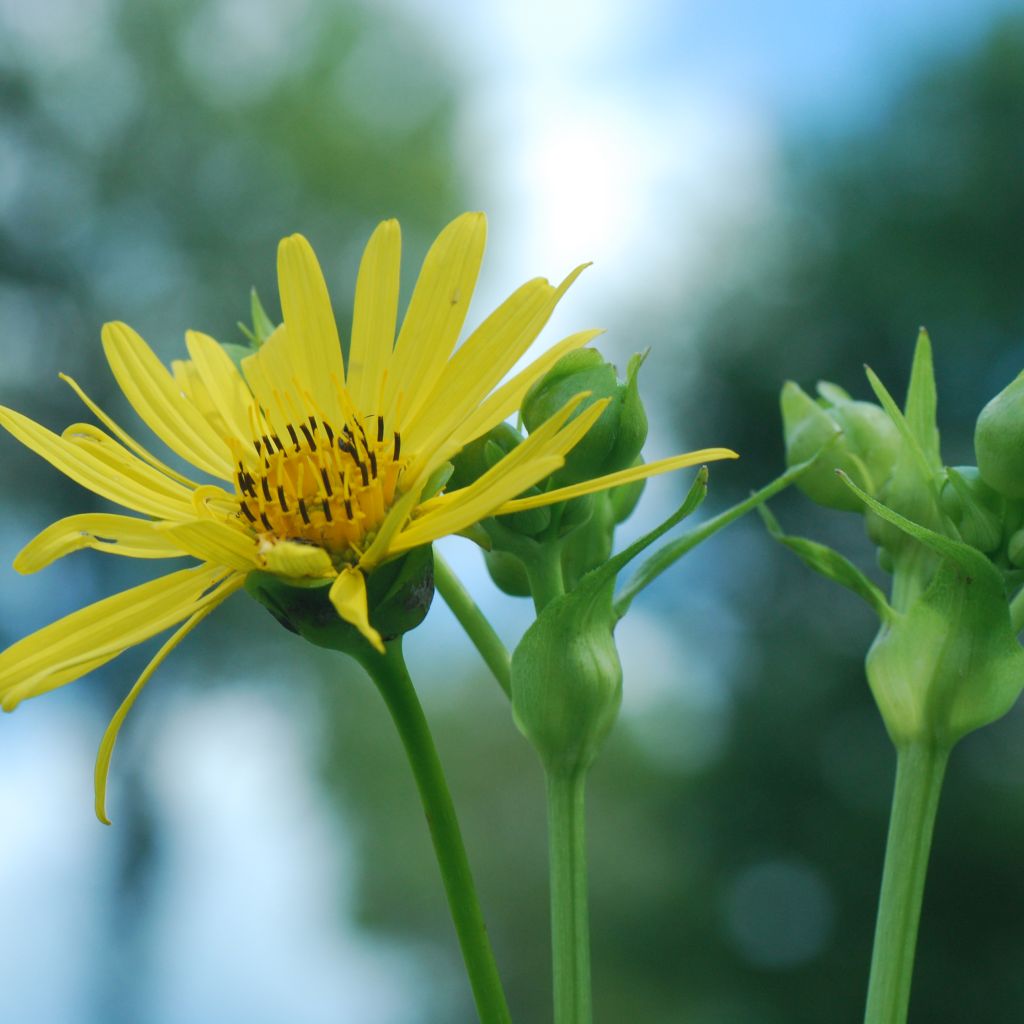

Silphium laciniatum
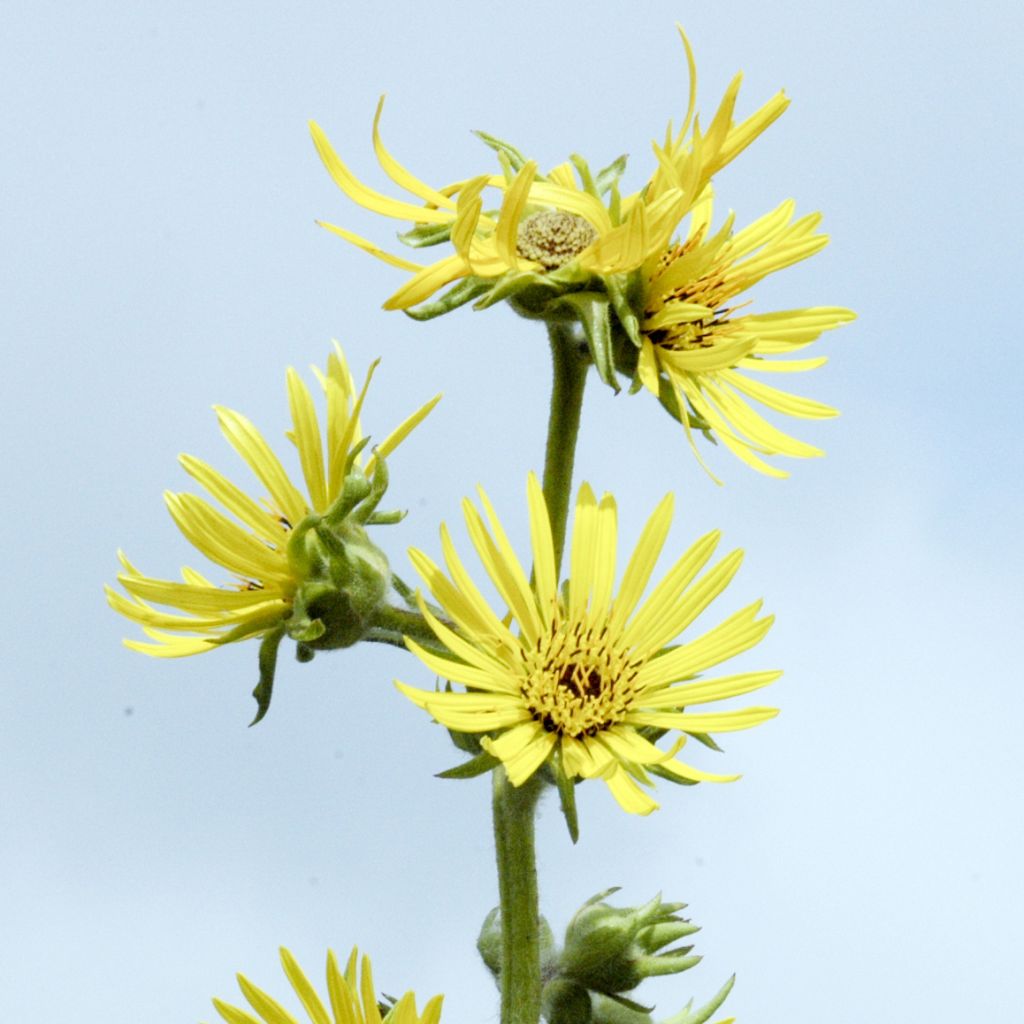

Silphium laciniatum
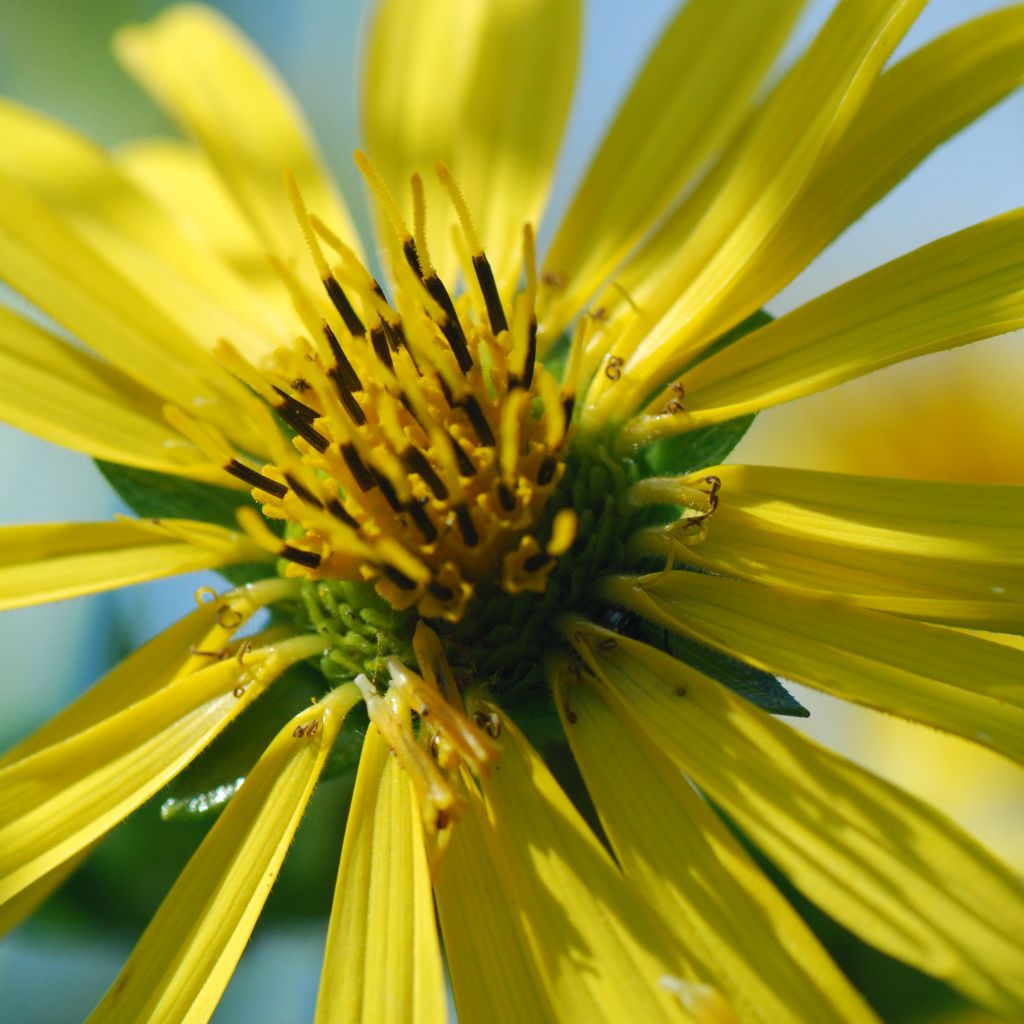

Silphium laciniatum
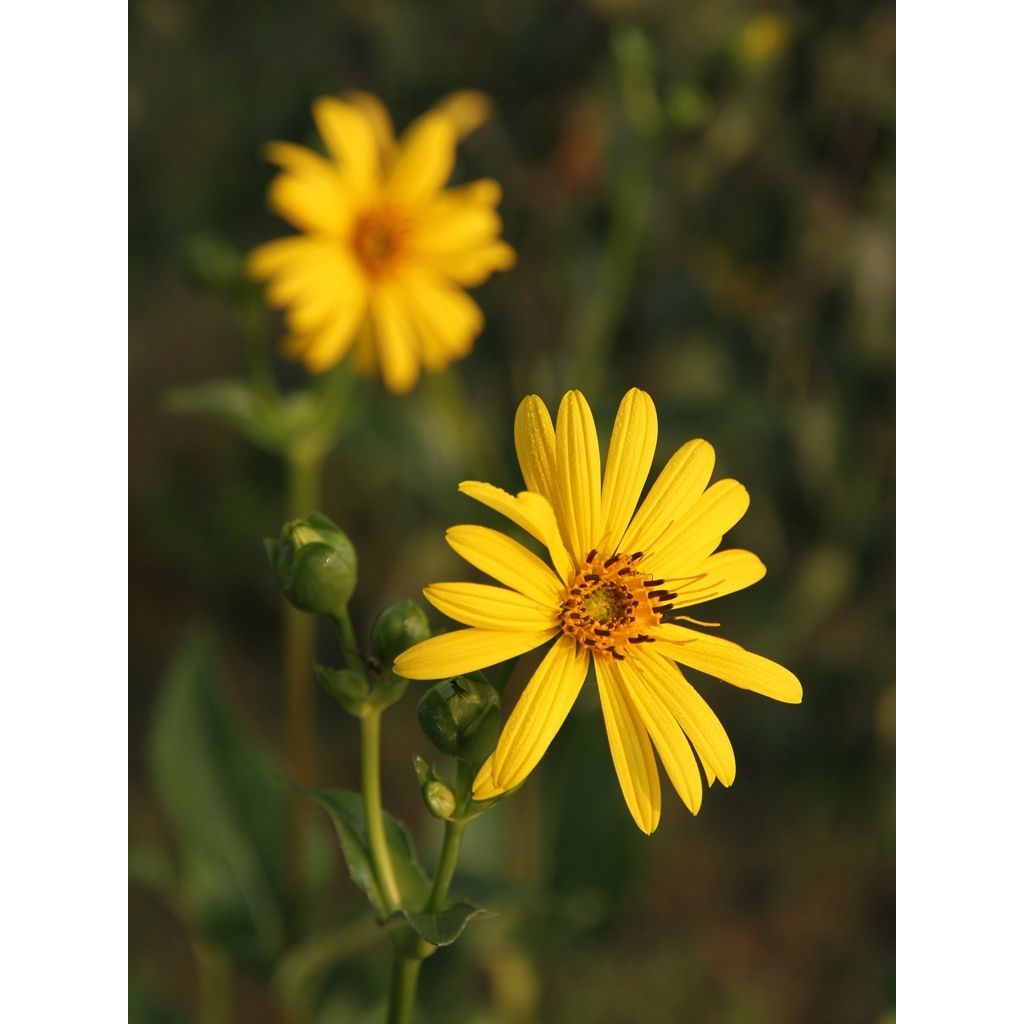

Silphium laciniatum
Silphium laciniatum
Silphium laciniatum
Compass plant, Rosinweed
Stunning as a background in a flowerbed.
Catherine Boursier, 03/09/2016
This item cannot be shipped to the selected country
Delivery charge from €5.90
More information
Schedule delivery date,
and select date in basket
This plant carries a 12 months recovery warranty
More information
We guarantee the quality of our plants for a full growing cycle, and will replace at our expense any plant that fails to recover under normal climatic and planting conditions.
From €5.90 for pickup delivery and €6.90 for home delivery
Express home delivery from €8.90.

Does this plant fit my garden?
Set up your Plantfit profile →
Description
Silphium laciniatum, better known as compass plant, is a towering perennial, with daisy-like, dark-centred flowers that reach up to 3 metres (10 feet). It is called the compass plant because of its leaves' ability to orient themselves on a North-South axis based on the rising sun. The stems exude a highly aromatic resinous sap reminiscent of turpentine. It thrives in full sun, in moist and rich, even heavy and chalky soil. A true icon of the wet and fertile prairies of North America, it can live for a hundred years. Its sculptural and sun-like silhouette is impressive on the horizon, adorned with insects and birds, at the edges of wild gardens.
Belonging to the large Asteraceae family, Silphium laciniatum is a cousin of Helianthus and Heliopsis, native to the wild prairies of Ontario, Canada, the eastern and central-western United States, as far as New Mexico. It is a herbaceous perennial that forms a huge rosette at ground level, from which branching stems emerge in summer, bearing few leaves and crowned with large golden-yellow flowers. In good growing conditions, this plant can easily reach 3 metres (10 feet) high and 70 cm (28in) wide. Each plant can produce up to 12 rough and aromatic stems, carrying leaves of quite varied shapes and sizes. They measure from 4 to 60 cm (2 to 24in) long, some reaching 30 cm (12in) wide. They are hairy, smooth or toothed, sometimes petiolate and bright green. Juvenile leaves emerge in random positions. In two or three weeks, their petioles orient themselves so that they position themselves vertically, towards the right or left. The resulting dual orientation, East-West and North-South, reduces the amount of sunlight reaching the leaf surface, therefore optimizing water use in the leaf tissues. The nectar-rich flower head is about 8 cm (3in) in diameter, composed of 27 to 38 ligulate golden-yellow flowers from July to October. The almost 2 cm (1in) seed is loved by by birds. The lifespan of this silphium is impressive, with some estimated to be a hundred years old.
Planting Silphium laciniatum is an investment for the future in garden design. It belongs in a shrub border, in a wild bed, in the background or at the edges of the garden, in a very open position. This plant is also a good plant for bordering ponds with its architectural silhouette and abundant foliage, with tall or medium-sized grasses, Artemisia lactiflora, 'herbstchnee' or laevis asters, and giant scabious Cephalaria gigantea.
North American settlers supposedly used the leaves of this Silphium to navigate when the sky was cloudy. It is also a medicinal and aromatic plant, used by Native Americans and settlers. Today, it is endangered in its country of origin due to the slow degradation of its natural habitat.
Report an error about the product description
Silphium laciniatum in pictures
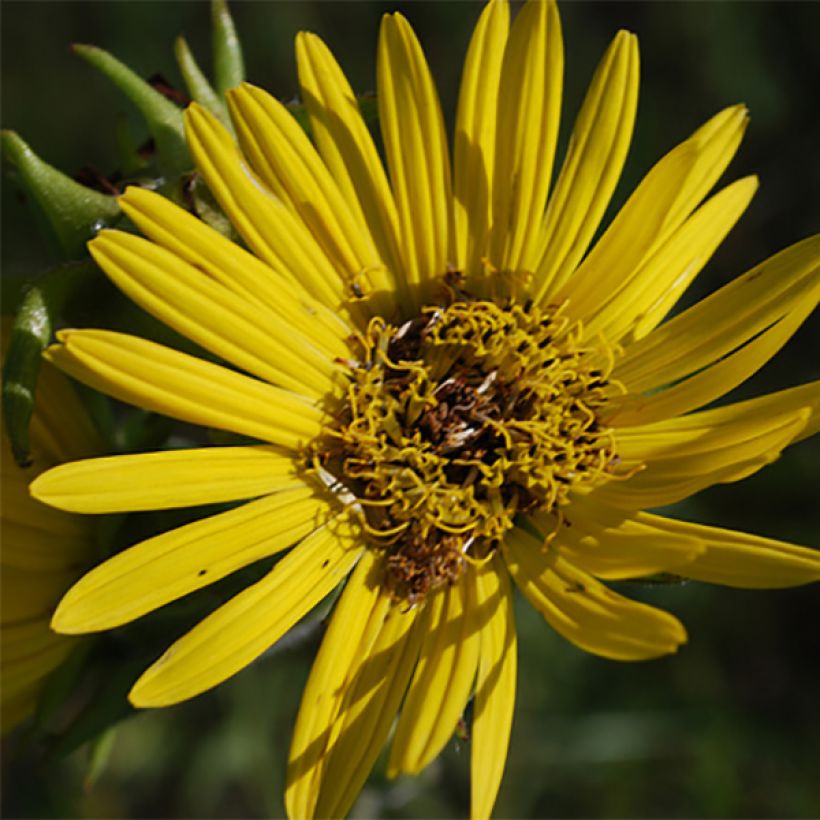

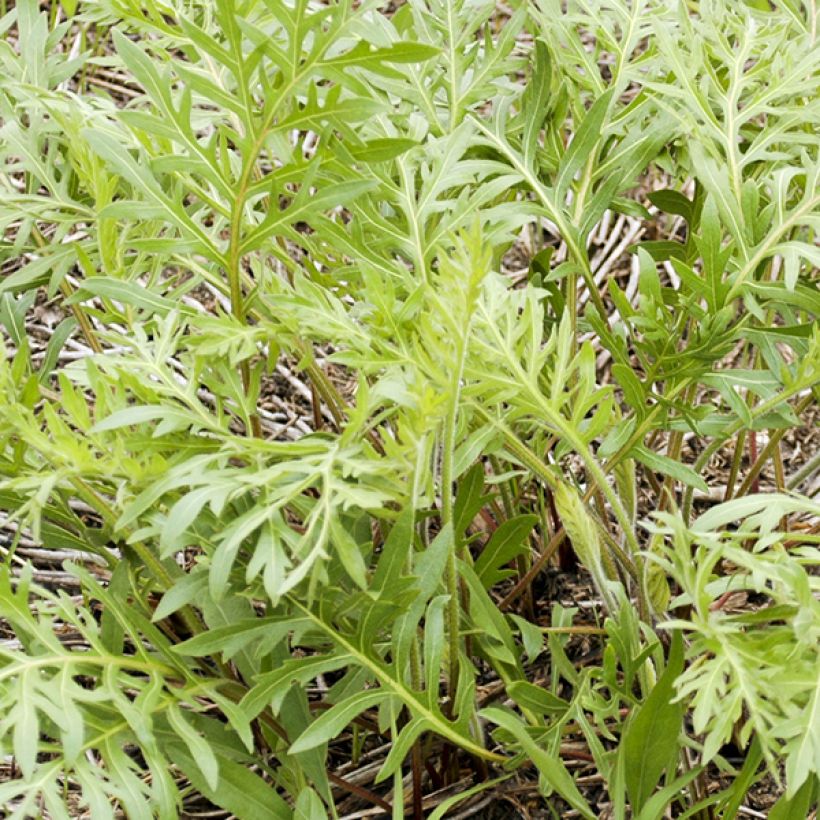

Flowering
Foliage
Plant habit
Botanical data
Silphium
laciniatum
Asteraceae
Compass plant, Rosinweed
North America
Other Silphium
Planting and care
Silphium laciniatum is easy to grow in an open position, in full sun and rich, moist to wet, even chalky, but well-drained soil. This species is more sensitive to winter moisture than S. perfoliatum.
Planting period
Intended location
Care
-
, onOrder confirmed
Reply from on Promesse de fleurs
Haven't found what you were looking for?
Hardiness is the lowest winter temperature a plant can endure without suffering serious damage or even dying. However, hardiness is affected by location (a sheltered area, such as a patio), protection (winter cover) and soil type (hardiness is improved by well-drained soil).

Photo Sharing Terms & Conditions
In order to encourage gardeners to interact and share their experiences, Promesse de fleurs offers various media enabling content to be uploaded onto its Site - in particular via the ‘Photo sharing’ module.
The User agrees to refrain from:
- Posting any content that is illegal, prejudicial, insulting, racist, inciteful to hatred, revisionist, contrary to public decency, that infringes on privacy or on the privacy rights of third parties, in particular the publicity rights of persons and goods, intellectual property rights, or the right to privacy.
- Submitting content on behalf of a third party;
- Impersonate the identity of a third party and/or publish any personal information about a third party;
In general, the User undertakes to refrain from any unethical behaviour.
All Content (in particular text, comments, files, images, photos, videos, creative works, etc.), which may be subject to property or intellectual property rights, image or other private rights, shall remain the property of the User, subject to the limited rights granted by the terms of the licence granted by Promesse de fleurs as stated below. Users are at liberty to publish or not to publish such Content on the Site, notably via the ‘Photo Sharing’ facility, and accept that this Content shall be made public and freely accessible, notably on the Internet.
Users further acknowledge, undertake to have ,and guarantee that they hold all necessary rights and permissions to publish such material on the Site, in particular with regard to the legislation in force pertaining to any privacy, property, intellectual property, image, or contractual rights, or rights of any other nature. By publishing such Content on the Site, Users acknowledge accepting full liability as publishers of the Content within the meaning of the law, and grant Promesse de fleurs, free of charge, an inclusive, worldwide licence for the said Content for the entire duration of its publication, including all reproduction, representation, up/downloading, displaying, performing, transmission, and storage rights.
Users also grant permission for their name to be linked to the Content and accept that this link may not always be made available.
By engaging in posting material, Users consent to their Content becoming automatically accessible on the Internet, in particular on other sites and/or blogs and/or web pages of the Promesse de fleurs site, including in particular social pages and the Promesse de fleurs catalogue.
Users may secure the removal of entrusted content free of charge by issuing a simple request via our contact form.
The flowering period indicated on our website applies to countries and regions located in USDA zone 8 (France, the United Kingdom, Ireland, the Netherlands, etc.)
It will vary according to where you live:
- In zones 9 to 10 (Italy, Spain, Greece, etc.), flowering will occur about 2 to 4 weeks earlier.
- In zones 6 to 7 (Germany, Poland, Slovenia, and lower mountainous regions), flowering will be delayed by 2 to 3 weeks.
- In zone 5 (Central Europe, Scandinavia), blooming will be delayed by 3 to 5 weeks.
In temperate climates, pruning of spring-flowering shrubs (forsythia, spireas, etc.) should be done just after flowering.
Pruning of summer-flowering shrubs (Indian Lilac, Perovskia, etc.) can be done in winter or spring.
In cold regions as well as with frost-sensitive plants, avoid pruning too early when severe frosts may still occur.
The planting period indicated on our website applies to countries and regions located in USDA zone 8 (France, United Kingdom, Ireland, Netherlands).
It will vary according to where you live:
- In Mediterranean zones (Marseille, Madrid, Milan, etc.), autumn and winter are the best planting periods.
- In continental zones (Strasbourg, Munich, Vienna, etc.), delay planting by 2 to 3 weeks in spring and bring it forward by 2 to 4 weeks in autumn.
- In mountainous regions (the Alps, Pyrenees, Carpathians, etc.), it is best to plant in late spring (May-June) or late summer (August-September).
The harvesting period indicated on our website applies to countries and regions in USDA zone 8 (France, England, Ireland, the Netherlands).
In colder areas (Scandinavia, Poland, Austria...) fruit and vegetable harvests are likely to be delayed by 3-4 weeks.
In warmer areas (Italy, Spain, Greece, etc.), harvesting will probably take place earlier, depending on weather conditions.
The sowing periods indicated on our website apply to countries and regions within USDA Zone 8 (France, UK, Ireland, Netherlands).
In colder areas (Scandinavia, Poland, Austria...), delay any outdoor sowing by 3-4 weeks, or sow under glass.
In warmer climes (Italy, Spain, Greece, etc.), bring outdoor sowing forward by a few weeks.

































